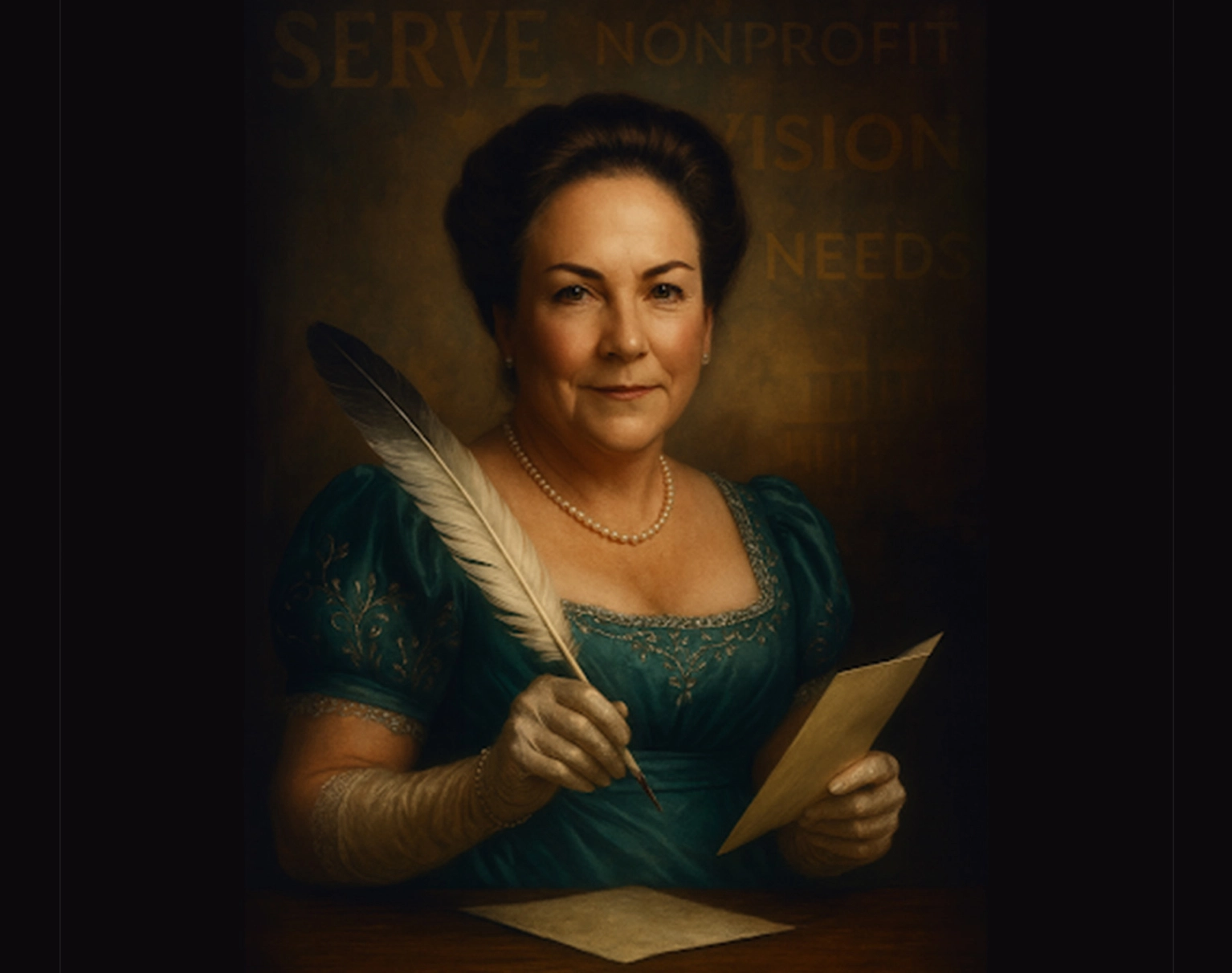The Lady Whistledown of Nonprofit Transformation – Part 1
“The ton are abuzz with whispers of yet another organizational transformation gone awry. One cannot help but wonder: if these esteemed leaders possess such keen insight into their missions, why do they remain so utterly blind to the machinations occurring within their own drawing rooms?”
Just as Lady Whistledown observed London society from her hidden vantage point, nonprofit leaders often miss the most crucial dynamics happening right under their noses. While they’re busy crafting strategic plans and measuring outcomes, the real story of their organization unfolds in hallway conversations, bathroom meetings, and the careful choreography of who gets invited to which “informal” gatherings.
The Society Papers of Nonprofit Culture
Every organization has its version of Whistledown’s society papers—the real news that circulates through informal networks while official communications paint an entirely different picture.
Consider this recent scene from a mid-sized nonprofit (names changed to protect the not-so-innocent): The board presentation showcased glowing diversity statistics and quoted staff about feeling “valued and heard.” Yet three Black staff members had quietly left in the past six months, each citing remarkably similar experiences of being overlooked for advancement and having their ideas attributed to white colleagues. The whisper network knew. The exit interviews documented it. But somehow, this never made it into the “society papers” presented to leadership.
What Gets Whispered vs. What Gets Reported
The gap between stated values and lived experience often lives in these unspoken spaces. Organizations proudly display their commitment to “collaborative leadership” while maintaining rigid hierarchies where ideas must travel up three levels before being considered. They tout “work-life balance” while consistently scheduling “optional” evening events that somehow become career-defining moments.
The Wingspan Method teaches us to read these invisible dynamics by asking different questions:
Instead of: “Do people feel included in our meetings?”
Ask: “Who speaks first, who speaks last, and who never speaks at all?”
Instead of: “Are we diverse and equitable?”
Ask: “Whose ideas get implemented, and whose get ‘taken under advisement’?”
Instead of: “Do people feel supported?”
Ask: “When someone makes a mistake, what actually happens to them?”
The Art of Authentic Observation
Lady Whistledown’s power came not from malicious gossip, but from fearless observation. She saw what others chose to ignore. In nonprofit culture transformation, this means developing what I call the “You Belong Here” lens—a way of viewing organizational dynamics that exposes exclusion hiding in plain sight.
Recently, I worked with an organization whose leadership was mystified by their retention challenges. “We’re like family here,” they insisted. But when we mapped the actual social networks, it became clear they were indeed like family—specifically, a family where some members were considered “core” relatives while others remained perpetual guests, always grateful for inclusion but never quite belonging.
The breakthrough came when we started paying attention to the seemingly small stuff: Who got consulted before decisions were announced? Whose personal lives were celebrated at staff meetings? Who was expected to prove their worth repeatedly while others’ competence was simply assumed?
Reading the Real Story
The most successful transformational leaders I know have developed an almost supernatural ability to read organizational culture. They notice:
- The Calendar Revelations: Which meetings happen when, where, and with whom present
- The Credit Attribution Patterns: How ideas travel and whose names stay attached
- The Emotional Labor Distribution: Who’s expected to smooth over conflicts, organize celebrations, and manage everyone’s feelings
- The Recovery Stories: What happens after mistakes, and who gets second (or third, or fourth) chances
One nonprofit CEO I work with started keeping what she called her “Whistledown Journal”—not to expose or embarrass, but to track patterns she might otherwise miss. She noticed that while leadership meetings often featured robust debate, staff meetings were notably quiet. The whisper network revealed that previous leaders had made it clear that “pushback” was career-limiting, even when officially encouraging “candid feedback.”
The Transformation Imperative
Here’s what Lady Whistledown understood that many nonprofit leaders miss: secrets have power precisely because they remain hidden. When organizations refuse to acknowledge their unspoken dynamics, those dynamics gain strength and influence.
But when leaders develop the courage to see clearly—and more importantly, to act on what they see—transformation becomes possible. Not the surface-level changes that look good in annual reports, but the deep cultural shifts that create organizations where people don’t just show up, but genuinely belong.
Your Whistledown Toolkit
Ready to start seeing what’s really happening in your organization? Try these observation techniques:
The Exit Interview Archaeology: Don’t just read recent exit interviews—look for patterns across the last two years. What themes emerge that nobody talks about in leadership meetings?
The Meeting Map: For one week, track every formal and informal gathering. Who gets invited to what? Where do the real decisions actually get made?
The Credit Trace: Follow one idea from conception to implementation. How many people touched it? Whose names stayed attached? Who got credit when it succeeded?
The Recovery Audit: Think about the last three significant mistakes in your organization. Who made them? What actually happened to those people? What message did this send?
The Plot Twist You Didn’t See Coming
Here’s the secret that would make Lady Whistledown herself proud: the most transformational leaders don’t use this observation to expose or punish. They use it to understand the system so they can change it.
Because once you see the real story of your organizational culture, you can start writing a better one.
Next week in Part 2: How to wield influence without authority—the player-coach approach to creating change from within. Because sometimes the most powerful transformations happen when nobody knows you’re the one holding the pen.
What secrets is your organizational culture keeping? I’d love to hear your thoughts—email me or share your observations on LinkedIn. Together, we can help the nonprofit sector move from keeping secrets to creating cultures where transparency and belonging aren’t just values on the wall, but lived experiences for everyone.

